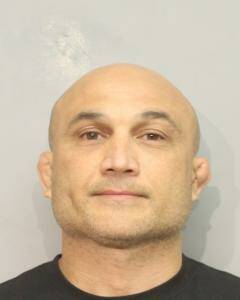“Mr. Rockefeller, if you allow me to build a golf course here, this’ll be the most beautiful hole in the world.”
That was the proposal posed by golf course architect Robert Trent Jones Sr. while standing on the Kohala coastline, overlooking the sweeping panoramic views of land and sea.
That hole, No. 3, is iconic.
No matter what cliffside tee box is chosen, Mauna Kea Golf Course golfers get the thrill of hitting a shot over the crashing waves of an azure ocean, in an attempt to reach the emerald greens. It’s not unusual for the hole’s beauty and challenge to cause brief interruptions, followed by silent or impassioned reflection, and even long-lasting celebrations.
For some golfers, making this signature hole is as much of a bucket list item as playing this “granddaddy” of golf courses.
For others, it’s a bragging right, one the course’s director of golf Josh Silliman never tires of hearing about. This is also where one celebrity told Silliman he wants his ashes to be shot.
Jones Sr. was a visionary who had a hand in 420 golf course designs spread across 42 states and 28 other nations.
For the Mauna Kea Golf Course, he succeeded in his vision for that third hole — one of the most photographed in the world, Silliman said.
After this stunner, the brutal No. 4 awaits.
These are some of the many attributes and experiences that have made Mauna Kea Golf Course special since its founding 50 years ago.
On Dec. 8, 1964, the “Big Three” of golf — Arnold Palmer, Jack Nicklaus and Gary Player — christened the Mauna Kea Golf Course, by playing here for a televised match. This date marked the official first day of play on the challenging course, Silliman said.
In celebration of this milestone, Mauna Kea Golf Course will move its annual Pro-Am Golf Tournament, typically hosted in the summer, to the winter this year. This highly anticipated tournament has been on the island’s golf calender for the past 40 years. Mauna Kea Golf Course hopes to increase the number of participating teams to more than 20, as well as have celebrities in attendance, Silliman said.
While Jones Sr. created an incredible championship golf course in an unlikely setting, a barren lava field at the time, his son, Rees Jones, also a celebrated golf course architect, upped the ante when redesigning it in 2008.
Rees Jones is known as “The Open Doctor” because clubs turn to him for prepping their courses for a U.S. Open, Silliman said.
Rees Jones respected the history, legacy and spirit of the course while also restoring it and keeping plenty of challenge, Silliman said. He kept the design and layout. While Rees Jones didn’t change the holes, he made the bunkers deeper, more severe and with bigger lips. He also expanded the overall yardage. He replanted TifEagle Bermuda grass on the greens and Tifway 419 hybrid Bermuda grass on the tees, fairways and roughs, Silliman said.
Because of contributions by father and son, this course has for years claimed its place as one of the top 100 courses in America, Silliman said.
The vision is to continue to elevate Mauna Kea Golf Course’s notoriety, honor its traditions and build growth in the business, Silliman said. Last year, approximately 25,000 rounds of golf were played here, he added.
On Jan. 16, Harvey Kachmarski and his sons, Taylor and John, were competing in their annual family golf match. The prize, they said, was respect. Kachmarski has been coming to the Big Island for years and prefers to stay at the Mauna Kea Beach Hotel because he likes the world-class amenities, especially the golf course, as well as the property’s close proximity to the beach and great snorkeling spots.
Silliman said it’s the guests and employees that truly make the course “a magical place.” It’s not uncommon to find generations of families returning and creating memories here.
As for the more than 40 golf course employees delivering the service and maintaining the facilities, they’ve helped preserve the experience Mauna Kea Golf Course has become known for.
“They’re the backbone,” Silliman said.
Many of the employees have worked at the course for years. There’s one who has been there just as long as the course and fondly remembers working for Laurance S. Rockefeller, the hotelier who founded The Mauna Kea Beach Hotel in 1965, Silliman said.
The green fees aren’t cheap. The rates range from $255 for nonresort guests and $160 per person for play after 1:30 p.m. to $95 for golfers younger than 18. The peak season is typically January to April, Silliman said.
Mauna Kea Golf Course has a history of giving back to the community. Student golf teams from Hawaii Preparatory Academy and Parker School practice here. It annually hosts Tommy Bahama’s Big Island Classic, which benefits North Hawaii Hospice, and will support the inaugural tournament by its sister course at the Hapuna Beach Prince Hotel, which helps Big Brothers Big Sisters of Hawaii Island.
Rudy Puana, of Waimea, has been a Mauna Kea Golf Course member for three years. He said it’s one of the most beautiful and challenging courses in the world. He thinks it’s as awesome as California’s Pebble Beach Golf Links.
Every time Puana plays at Mauna Kea Golf Course, he learns something and “it’s usually very humbling.” But by consistently playing here and soaking in the lessons received, he has gotten better with each game. Puana said he now “destroys” the other local resort courses, where everything is more wide open, leisurely and accommodating for golfers of all ages.
His favorite hole is No. 3.
“It’s gorgeous,” he said. “It doesn’t matter if I’m with friends, family or having a meeting on the golf course. Every time we get to that hole, everything goes on pause.”
Email Carolyn Lucas-Zenk at clucas-zenk@westhawaiitoday.com.





